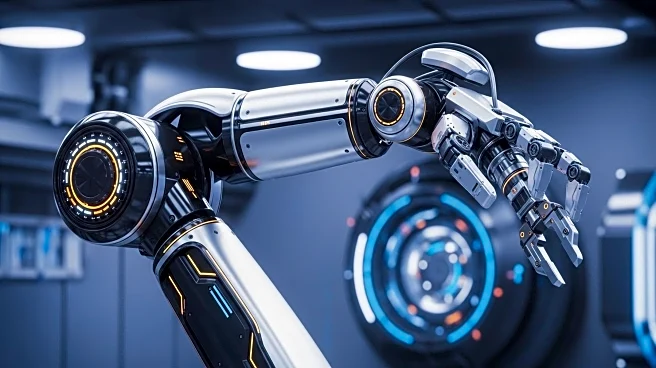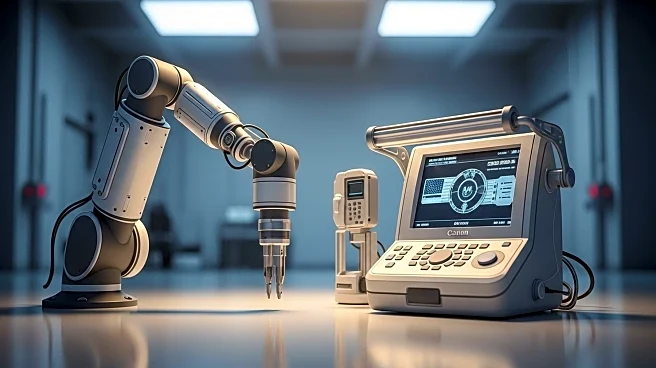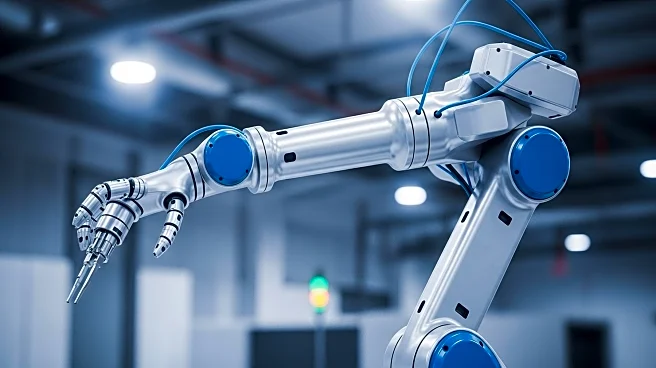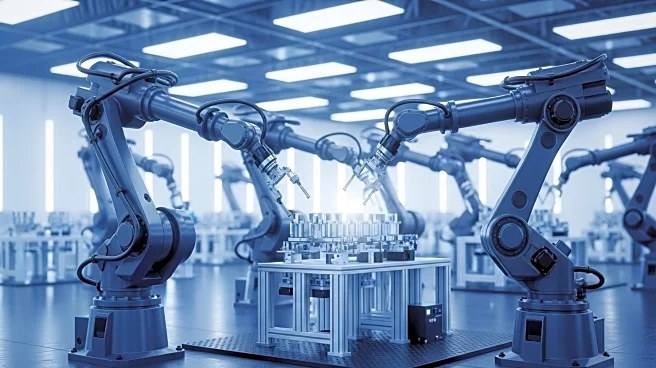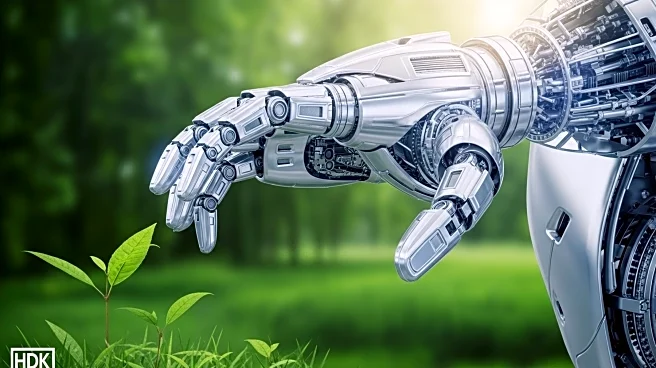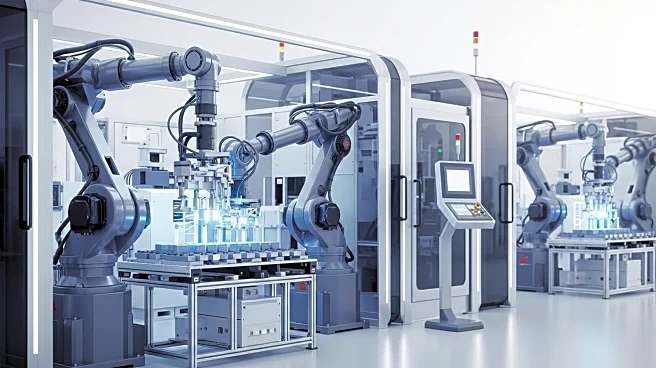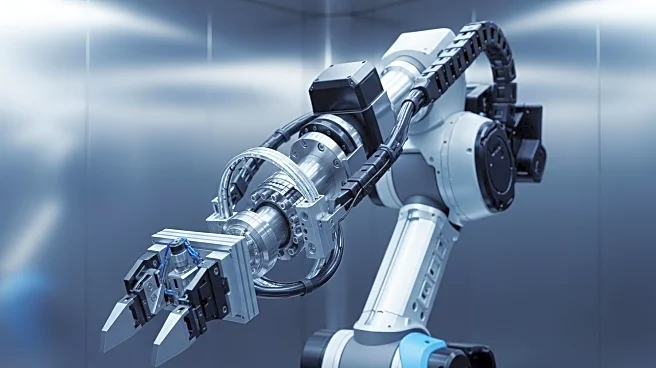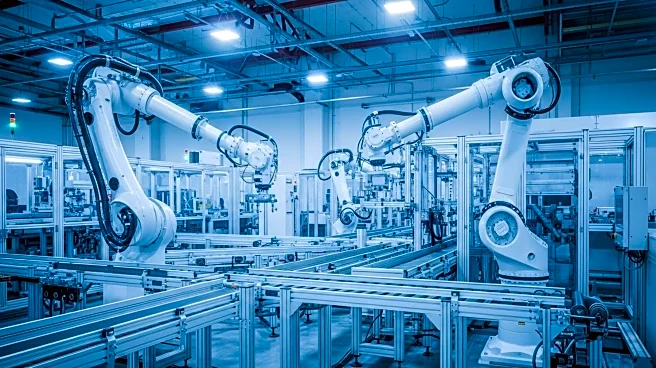What is the story about?
What's Happening?
China has significantly outpaced other nations in the deployment of industrial robots, with over two million robots currently operational in the country. According to the International Federation of Robotics, China installed nearly 300,000 new robots last year, accounting for 54% of all global robotic deployments in 2024. This surge in automation aligns with China's role as a global manufacturing leader, now responsible for nearly one-third of global manufacturing output. In contrast, the United States added only 34,000 industrial robots in the same period. The trend is expected to continue, with China projected to see a 10% annual growth in automation through 2028, driven by new market applications in sectors like food and beverage, rubber and plastic, and textiles.
Why It's Important?
China's rapid adoption of robotics is reshaping the global manufacturing landscape, posing challenges for U.S. industries. The disparity in robotic deployment highlights the competitive edge China holds in manufacturing efficiency and output. This could lead to increased pressure on U.S. manufacturers to adopt similar technologies to remain competitive. The U.S. faces additional challenges, such as a shortage of skilled programmers, exacerbated by increased H1-B visa fees under the Trump administration, which may hinder the ability to attract necessary talent. As China continues to expand its automation capabilities, U.S. industries may need to accelerate their own adoption of robotics to maintain their market positions.
What's Next?
The continued growth of China's robotics industry suggests that U.S. manufacturers will need to strategize on integrating more automation into their processes. This may involve investing in workforce training to address the skills gap in programming and maintenance of robotic systems. Additionally, policy adjustments regarding skilled labor immigration could be considered to attract the necessary talent. The U.S. may also explore partnerships or innovations in robotics to enhance its competitive stance. Monitoring China's advancements and adapting to technological shifts will be crucial for U.S. industries to sustain their global competitiveness.
Beyond the Headlines
The rise of robotics in China also raises questions about the future of labor markets and the ethical implications of automation. As robots take on more roles traditionally held by humans, there may be significant shifts in employment patterns, requiring new policies to support displaced workers. Furthermore, the environmental impact of increased manufacturing output and automation should be considered, as it may lead to higher energy consumption and resource use. These factors highlight the need for a balanced approach to technological advancement, considering both economic benefits and societal impacts.
AI Generated Content
Do you find this article useful?
